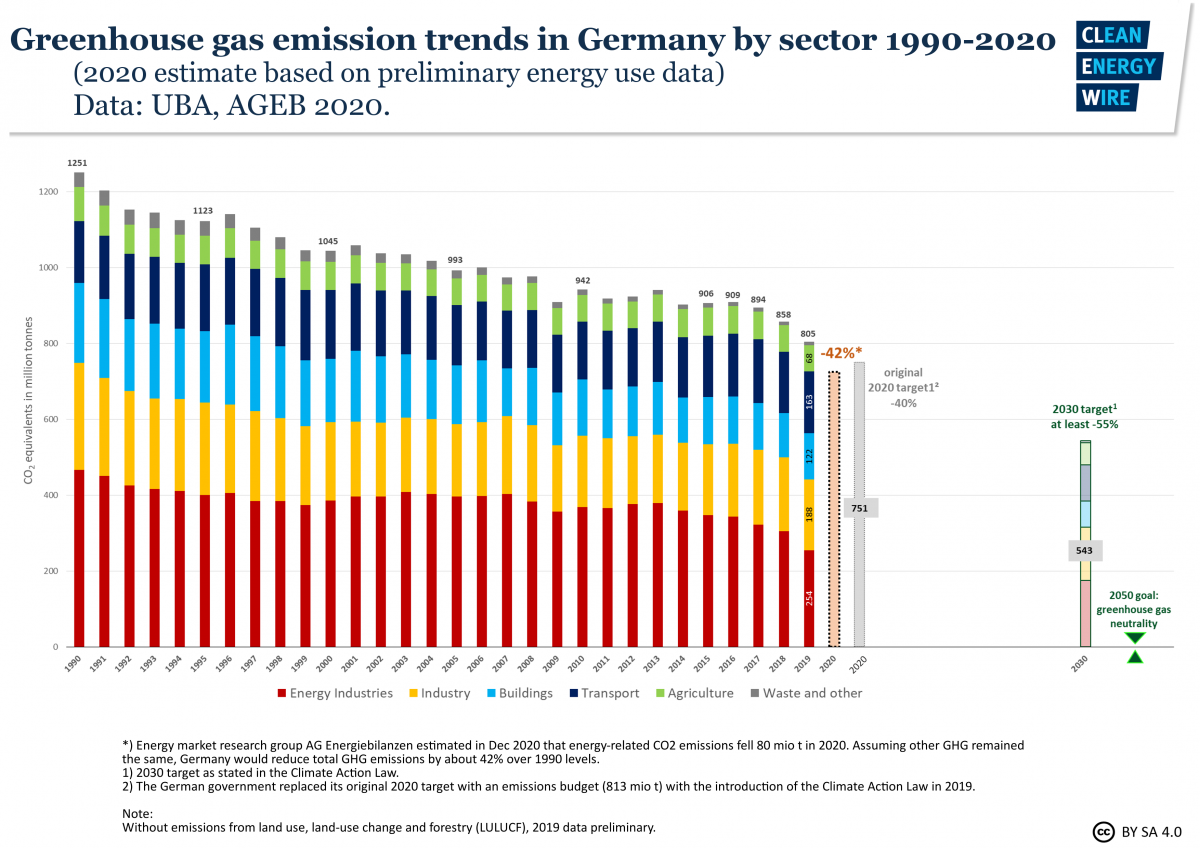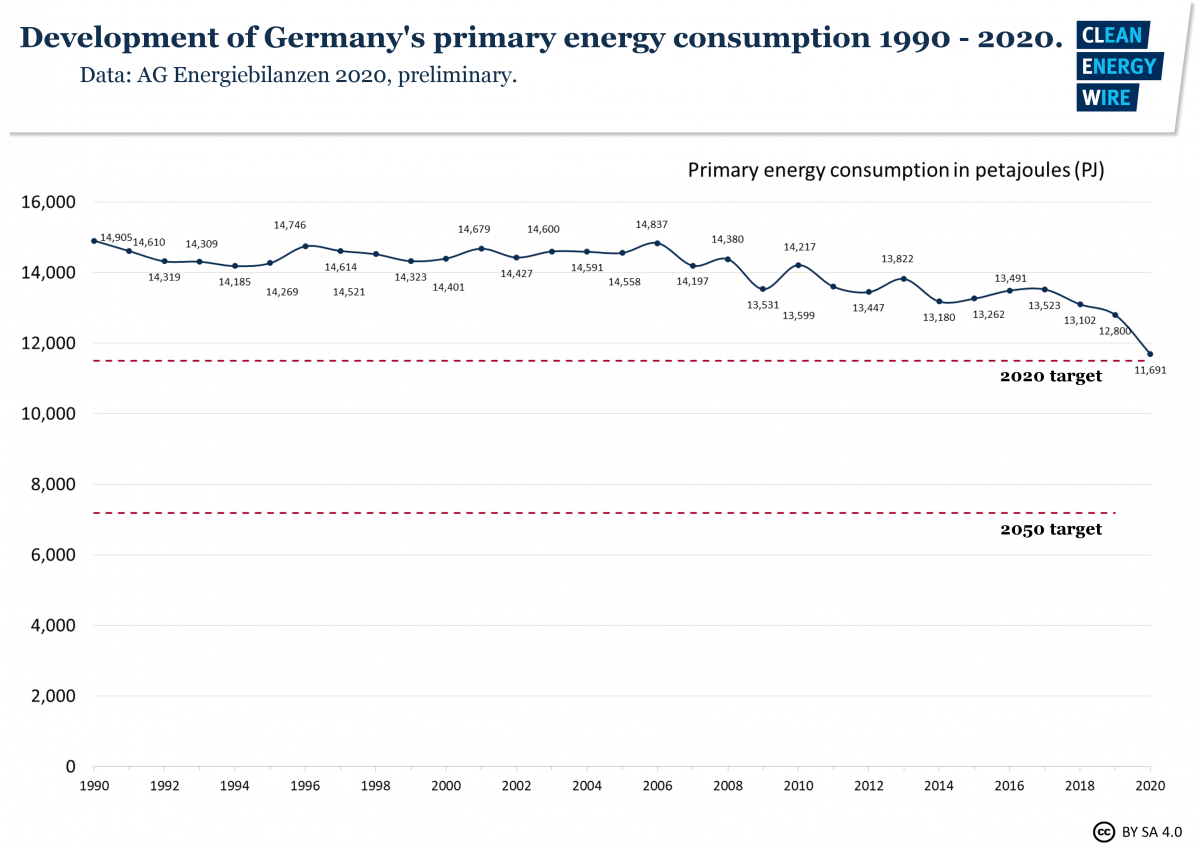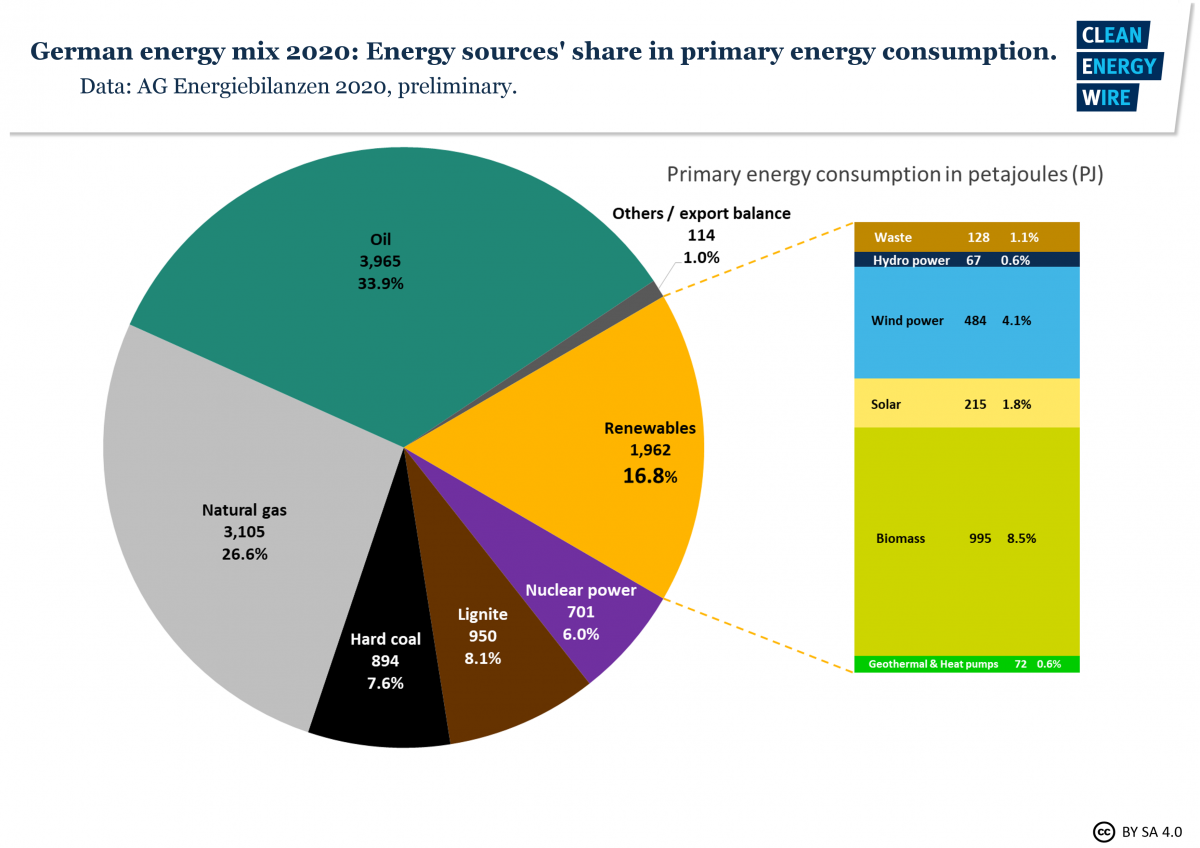German energy use hits 'historic low' in pandemic, renewables share keeps rising
The coronavirus pandemic has seen Germany's energy demand fall to a "historic low" in 2020, with the consumption of electricity and fuels falling 8.7 percent compared to last year, said energy market research group AG Energiebilanzen (AGEB) based on preliminary figures. This led to a significant drop of CO2 emissions and means the country will likely reach its original greenhouse gas reduction target of -40 percent compared to 1990.
With a total energy consumption of about 11,700 petajoule (PJ), demand was over 20 percent lower than in 2006, the year with the highest energy consumption on record, the researchers said. "The macroeconomic and sectoral ramifications of the coronavirus pandemic are primarily responsible for the significant reduction in demand," the AGEB said, adding that other long-term trends, such as greater energy efficiency and relatively mild weather conditions, also contributed to reduced consumption.
Oil consumption fell by 12 percent, especially due to a massive drop in aviation fuel demand, while hard coal and lignite each fell by over 18 percent. This was due to lower demand and a higher use of renewables and natural gas. Nuclear power production dropped by about 14 percent due to the scheduled closure of another plant at the end of 2019. Renewable energy generation, on the other hand, increased by three percent to nearly 2,000 PJ. Wind power generation grew by seven percent and solar power by nine percent. This meant that the share of renewable power in primary energy consumption climbed to 17 percent, slightly overtaking coal (16%). The vast majority (60%) of energy consumption was covered by oil and gas.
As a result of the shift towards renewable power and lower overall consumption, the country's energy-related CO2 emissions are expected to be about 80 million tonnes (12%) lower than in 2019. Energy-related CO2 emissions account for about 85 percent of Germany's total greenhouse gas emissions. Assuming that all other GHG emissions remained unchanged, Germany would surpass its original target for 2020 and achieve a 42 percent reduction compared to 1990 levels.
Lobby group BDEW said that Germany's energy industry emissions dropped by 15 percent this year, meaning the sector reduced its total CO2 output by 53 percent compared to 1990 levels. Power consumption in 2020 fell by 4.4 percent compared to the previous year "due to the economic slump resulting from the coronavirus pandemic."
BDEW head Kerstin Andreae said the past ten years amounted to a "triumph" for renewable energy production in Germany, which had expanded its share in the power production mix from 17 percent in 2010 to 45 percent in 2020. However, in order to ensure a continuation of this trend, regulatory hurdles -- especially to wind power expansion -- would have to be removed swiftly, she added, arguing that the latest reform of Germany's Renewable Energy Act (EEG) would not be sufficient to achieve this goal. On and offshore wind power production has become "by far" the most important source in German power production, generating about the same volume of electricity as all coal plants taken together, Andreae said.




